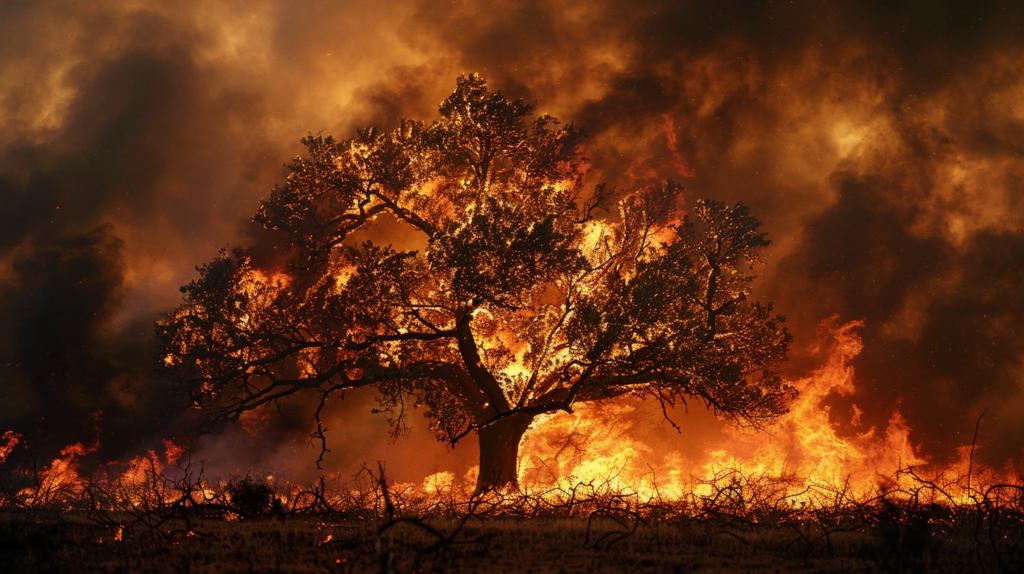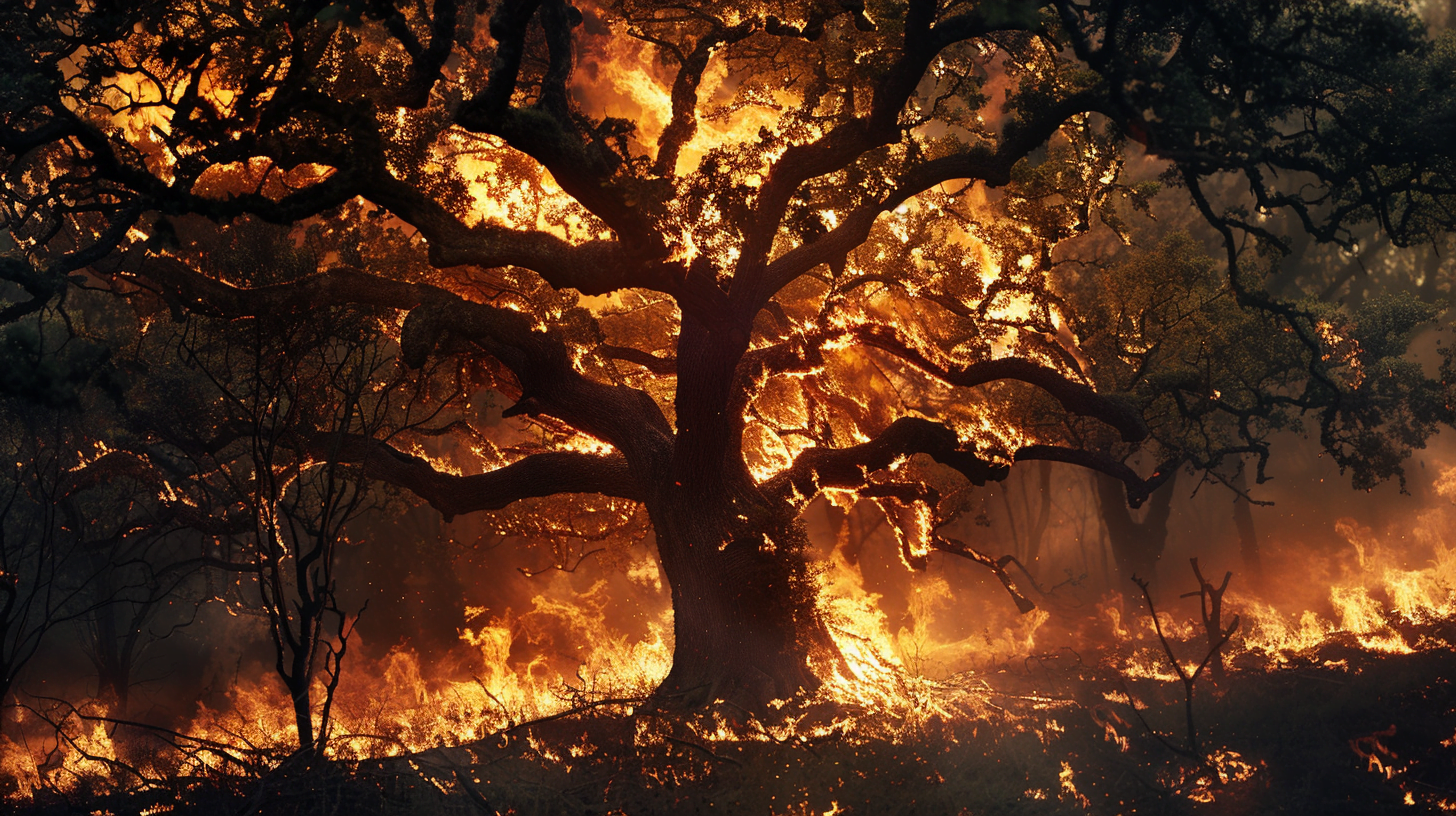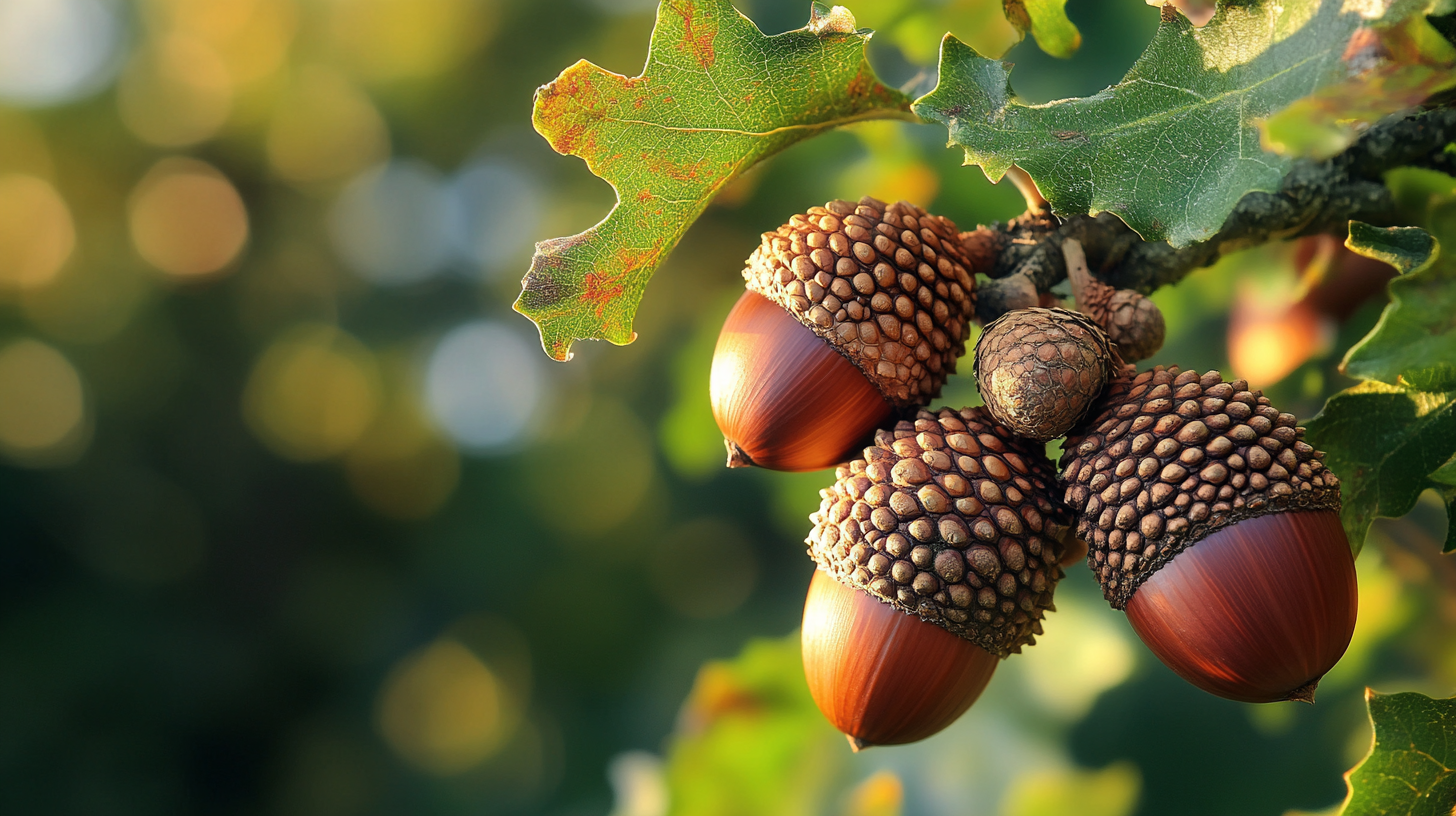Table of Contents
Oak trees are a staple of many ecosystems around the world, providing shade, food, and habitat for countless species. However, with the increasing frequency and severity of wildfires, the question of whether oak trees are fire resistant has become a pressing concern. In this article, we’ll delve into the anatomy of oak trees, their response to fire, and the factors that affect their fire resistance. We’ll also compare oak tree fire resistance to that of other tree species and discuss management strategies for enhancing their fire resistance.
The Anatomy of an Oak Tree: Understanding Its Fire-Resistant Features
Oak trees have several features that make them more resistant to fire than other tree species. One of the most significant is their thick bark, which can be up to 10 cm (4 inches) thick in mature trees. This bark acts as a protective barrier, shielding the delicate inner tissues of the tree from heat and flames. The bark is also rich in cork, a fire-resistant material that helps to insulate the tree from the heat of a fire.
In addition to their thick bark, oak trees have a unique vascular system that helps them to resist fire damage. The tree’s xylem and phloem tissues are protected by a layer of cambium, which is resistant to heat and can help to regenerate the tree’s vascular system if it is damaged by fire. This allows oak trees to recover more quickly from fire damage than other tree species.
Variations in Fire Resistance Among Oak Tree Species
While all oak trees possess some level of fire resistance, there are significant variations in fire resistance among different oak species. White oak (Quercus alba) is generally considered to be one of the most fire-resistant oak species, due to its thick bark and slow growth rate. Red oak (Quercus rubra) is also relatively fire-resistant, although its thinner bark makes it more susceptible to damage than white oak. Live oak (Quercus virginiana) is less fire-resistant than white or red oak, due to its faster growth rate and thinner bark.
| Oak Species | Fire Resistance |
|---|---|
| White Oak | High |
| Red Oak | Medium-High |
| Live Oak | Medium |
How Oak Trees Respond to Fire
Oak trees respond to fire in a variety of ways, depending on the intensity of the fire and the health of the tree. Scorching, which occurs when the tree is exposed to low-intensity heat, can cause damage to the tree’s leaves and bark, but is unlikely to kill the tree. Charring, which occurs when the tree is exposed to higher-intensity heat, can cause more significant damage to the tree’s bark and vascular system. Killing, which occurs when the tree is exposed to extremely high-intensity heat, can cause the tree to die.
| Fire Intensity | Tree Response |
|---|---|
| Low | Scorching |
| Medium | Charring |
| High | Killing |
Environmental and Management Factors Influencing Oak Tree Fire Resistance
Oak tree fire resistance is influenced by a variety of environmental and management factors. Climate plays a significant role, with oak trees in drier climates being more susceptible to fire damage than those in more humid climates. Soil moisture is also important, with trees growing in well-watered soils being more resistant to fire than those growing in dry soils.
Management practices, such as thinning and pruning, can also impact oak tree fire resistance. Thinning can help to reduce the risk of fire by removing fuel from the forest floor, while pruning can help to reduce the risk of fire spreading through the canopy.
Comparing Oak Tree Fire Resistance to Other Tree Species
Oak trees are not the only tree species that possess some level of fire resistance. Pine trees (Pinus spp.), for example, have a thick bark that helps to protect them from fire damage. Spruce trees (Picea spp.) have a more delicate bark, but are often found in cooler, more humid climates that are less prone to wildfires.
| Tree Species | Fire Resistance |
|---|---|
| Oak | High |
| Pine | Medium-High |
| Spruce | Medium |
Strategies for Enhancing Oak Tree Fire Resistance Through Management
There are several management strategies that can be used to enhance oak tree fire resistance. Prescribed burning, which involves intentionally setting fires in a controlled manner, can help to reduce the risk of wildfires by removing fuel from the forest floor. Thinning can also help to reduce the risk of fire by removing fuel from the forest floor and creating a more open canopy.

Conclusion
Oak trees are not completely fireproof, but they possess several characteristics that make them more resistant to fire than other tree species. By understanding the anatomy of oak trees, their response to fire, and the factors that affect their fire resistance, we can better manage these valuable resources and reduce the risk of wildfires. Whether you’re a forester, a landowner, or simply someone who appreciates the beauty of oak trees, this knowledge can help you to appreciate the durability of oaks in the face of fire.
Final Thoughts: Oak trees are a vital part of many ecosystems, providing shade, food, and habitat for countless species. By enhancing their fire resistance through management practices like prescribed burning and thinning, we can help to ensure the long-term health and resilience of these valuable resources.




